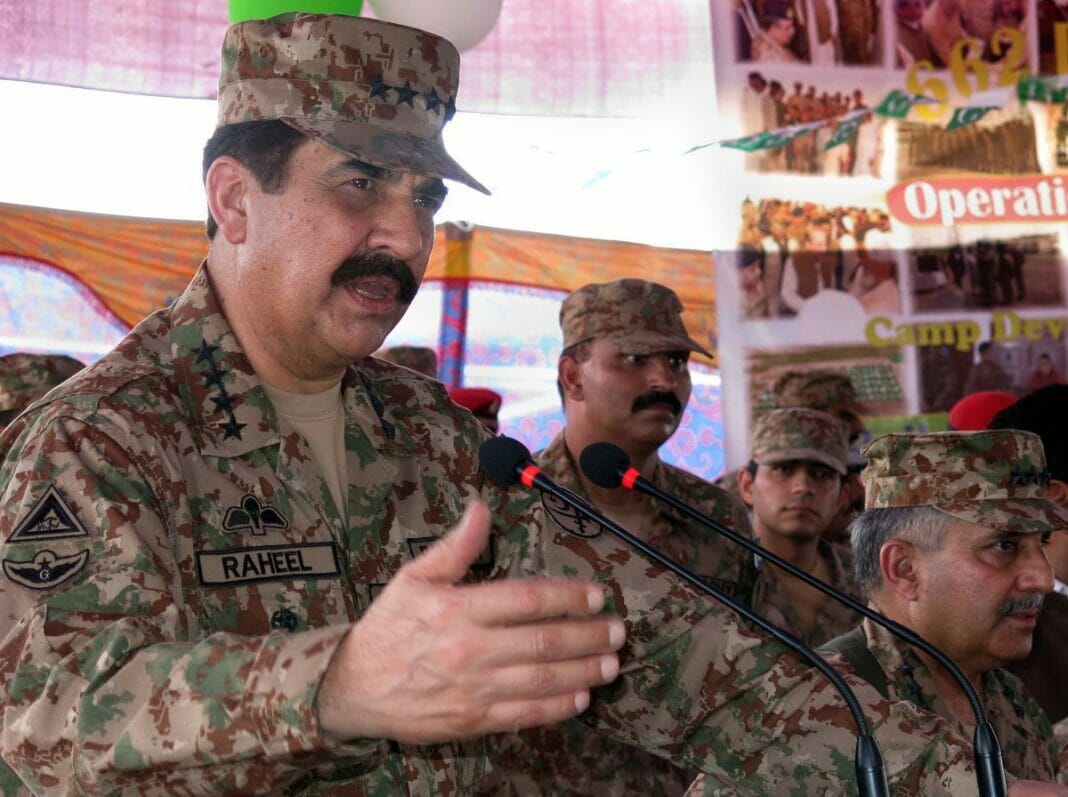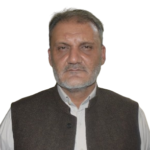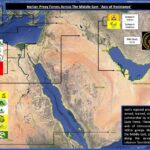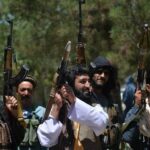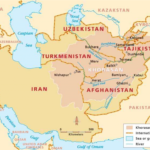From the Tirah Valley to Swat, Waziristan to Karachi, the armed forces have been intertwined in winning battle after battle in the domestic war that had engulfed the nation. We can honestly state that the armed forces have successfully defended Pakistan’s sovereignty, but the war is far from over.
When we look at operations like Rah-e-Nijat, Rah-e-Haq, and Zarb-e-Azb, we need to be careful in understanding that military operations have a different measure of success compared to political rehabilitation campaigns. In a military campaign, the armed forces are primarily interested in the re-capture of territory and the elimination of the threat. In rehabilitation campaigns, the goal is to rejuvenate the areas, eliminate the opportunities that these groups thrive on and give the nation a peaceful existence.
Both are essential to the overall success, otherwise short-term gains are lost and skirmishes increase.
While many would like to point the finger at the armed forces for the military campaign, what they fail to understand or accept is that without Zarb-e-Azb, the terrorists would still be attacking Pakistan at will.
Let’s talk about how we got here and what we have achieved.
The Watershed Moments
When discussing Pakistan’s fight against terrorism, we can point to watershed moments, which redefined the entire war. These watershed moments started well before September 11, 2001, but the world wasn’t concerned when it was just Pakistan facing these threats. In terms of our fight against terrorism, we can identify 3 specific watershed moments – 9/11, Lal Masjid and Army Public School.
We all understand the crater that was created in world peace on September 11th and the mandate that was given to the Bush administration in the United States. We all understand that this one act of terror turned the US administration and its citizens squarely against Muslims because the Western media refused to identify the differences between the terrorists and the true Muslims. The importance of that statement also relates to the internal problems that were faced by all the Muslim countries due to poor media reporting.
Many have argued that former President General (r) Musharraf pushed Pakistan into someone else’s war, but let’s be clear for once. Let us assume that Musharraf and his advisors had said no to the US coalition and becoming a frontline state in the Global War on Terror (GWoT). The world already believed that Pakistan, it’s armed forces and the ISI was fostering and exporting terrorism, a “fact” that has been repeatedly stated in the global media after every terror attack.
Does the intelligent, logically thinking human being actually believe that Pakistan would not have been a target of the US in this war?
The second watershed moment was the Lal Masjid buildup and operation. Most of us still remember the black masked faces of the Lal Masjid Brigade rampaging through Aapara Market shutting down DVD and music shops, barber shops and anything else they felt was against their interpretation of Islam. These same people, and I use that term very loosely, also took to kidnapping police officers, salon owners and many others to force them to accept the Lal Masjid interpretation of Islam, otherwise they would face the consequences of an over-radicalized imam. Ghazi Rashid, the leader of the Lal Masjid Brigade, followed the same leadership model as Fazlullah in Swat – strike fear into the hearts of those who disagree with you.
Ghazi Rashid famously told the Musharraf government and the international media about the 50,000 suicide bombers they had trained and spread across Pakistan to reek havoc on the nation if the government took any steps to stop them. Many of the militant groups around FATA also took oaths of allegiance to Ghazi Rashid, promising to stand firmly alongside throughout the fight.
This was a watershed moment for the entire nation, whether they realized it or not, and that moment still exists today. Before the operation started, the entire nation was against the actions of the Lal Masjid Brigade. They were vocal and they were angry when they demanded the government take action against the terrorists. Newspapers were filled with articles decrying the “inaction” of the Musharraf government, and the constant questions about how the masjid was able to get such weaponry in the nation’s capital, the obvious finger being pointed at the ISI, rather than the weak policing across the nation.
We would be remise if we didn’t point out an exchange between President Musharraf and Hamid Mir, where Mir asked Musharraf why his government had not taken action against Lal Masjid. Musharraf’s response was as calculated and correct as we would expect from the Army Chief – “I know that today you are asking me to take action, but I know the day that I do, you will be the first to criticize me and my government for doing what you asked us to do.”
And that is exactly what happened days later when the army took up positions outside Lal Masjid. When the first bullet was fired from Lal Masjid, the media’s position turned and suddenly the terrorists were innocent victims of a “brutal government and military.” What people forgot was that same “brutal government” facilitated the escape of over 700 people from the masjid, without forcibly arresting them for their involvement in terrorist activities. What the people didn’t know was that many of the students inside Lal Masjid were being held there by force. The public opinion shifted and the operation, while extremely successful, was used against the government in the civilian courts, as if they had murdered innocent people without remorse or reason.
We still, to a great extent, haven’t recovered from that positional shift because it involved a solidification of a mindset.
For eight years, there wasn’t a day that people didn’t fear a potential attack outside their school, home, office or busy market. The terrorists had succeeded in striking fear into the hearts of media personalities who needed to broadcast the national narrative. The people of Pakistan became the victims that were never spoken, never considered and never acknowledged. The government had spent one year negotiating with the Tehrik-e-Taliban Pakistan (TTP), which had emerged as a coalition of terror groups after the Lal Masjid operation, to avenge their fallen brothers. The negotiations had caused splinter groups to emerge from the mainstream TTP that were more brutal that the TTP itself.
Then, the morning of December 16, 2014 came at Army Public School in Peshawar. As the children were seated in the auditorium, terrorists broke through the gates and opened fire on the innocent children, teachers and administration. There are rumors that some of the terrorists had lists of names and they sought out the children that matched those names. This was the third watershed moment for Pakistan.
If the attack on Army Public School was an attempt to shake the military and the confidence of the nation, it catastrophically failed to deliver. Rather than finding fear, the attack had galvanized the nation into taking serious and decisive action against the individuals who had attempted to take Pakistan hostage. While politicians were still trying to wrap their heads around what had happened, the armed forces had already opened up attack plans and were hitting terrorist hideouts, munitions depots and assets within hours of the APS attack.
Operation Zarb-e-Azb
When we are assessing the successes of military led campaigns, we must take great care to not mix the military responsibility with the government’s responsibility. For a military, the objectives are to re-capture territory and eliminate the threat. For the government, they must focus on the rejuvenation of the areas, elimination of opportunities for recruiters and to provide that nation a peaceful existence. Both of these are essential for the overall success of the other, otherwise the short-term successes don’t convert to long-term peace.
Operation Zarb-e-Azb is a conglomeration of lessons learned during Rah-e-Nijat and Rah-e-Haq, not to mention other operations that have taken place over the past 12 years throughout the country. Rah-e-Haq and Rah-e-Nijat showed us the difference between having the public support in an area. During the first operation in Swat, the armed forces didn’t have public support, as a result, the terrorists were being given safe haven by the citizens of the district. During the second operation, the public support was eliminated through the acts of the TTP itself and resulted in a completely different battle.
We can safely say that the operation itself has broken the back of the TTP operational and strategically, with the loss of the Tirah Valley, the main crossing between Afghanistan and Pakistan, the elimination of public support among the residents of FATA and the elimination of the munitions and bomb making factories. Additionally, with the leadership of the TTP, Lashkar-e-Islam and Jamaat-ul-Ahrar safely pushed across the border to Afghanistan, there is a confusion among the fighters still trapped in FATA. The result has given Pakistan many months of peace and the opportunity to eliminate all the facilitators and financiers of these monsters.
What is also interesting is the strategic shift of the Government of Pakistan to support the armed forces both in the battlefield and in the courtroom. The same government that we watched bumble through the negotiation process has stepped up and given the country the Pakistan Protection Ordinance, the still toothless National Action Plan, the 21st amendment to the Constitution of Pakistan establishing military courts and a concerted narrative to garner more public and moral support for the operation and the military itself.
The public support for the operation and the military is crucial, as we have seen with the watershed moments. Without public support, the operation, either militarily or politically, will never achieve the final result. As we have seen in the past, the media of Pakistan tended to walk a fine line between supporting the national narrative and giving airtime to known terrorists. This was evidenced after the APS attack when the media discussed the validity of the terrorist argument of killing children because they were of fighting age. These conversation and arguments don’t happen when a media is doing their job responsibly. Since the start of Zarb-e-Azb, we have seen the military leadership gaining more popularity domestically and internationally, we have seen the international media doing their best to beat up on Pakistan from other positions, but they have been unable to shake the resolve of the nation. The “do more” mantra has disappeared from all quarters of the international community.
Where Do We Go From Here
In any war, there are three distinct types of people involved. There are the participants, whether in uniform or enemy combatants, standing on either side of the battlefield, fighting for what they believe. There are spectators, the general public and media, who watch the carnage on television and take sides based on the limited information they receive. Finally, and most importantly, there are the victims who pay with their limbs, lives and family members for being in the wrong place at the wrong time. The global audience watches the show from the comforts of their living rooms, but they aren’t interested in the victims, they are interested in the fight. They see things in black and white, good versus evil, and us against them.
For us, we don’t have the privilege of black and white, good versus evil, because we have a nation that is divided along ethnic and religious groupings. We must see things in shades of grey, who could potentially be a problem in the near future or long-term, but those shades of grey must not become the determining factor in where our fight against these terror groups leads. Instead, we must be looking at the next logical step in the expansion of the operation.
Over the past six months, we have seen the Karachi Operation kick off with great success in arresting and silencing terrorists embedded within political parties, the religious community and the general public. The Sindh Rangers, against all obstacles from the provincial government, have achieved what was needed for Karachi, without the political point scoring. While the largest political parties in the province are arguing about the scope and the tenacity of the operation, the Rangers continue to silence threats to the peace of the city. This operation must continue to a logical conclusion, even if it means declaring some political parties as enemies of the state for their support of gangs and terror.
In Baluchistan, the armed forces and para-military have ramped up their operations against the separatist groups and leaders, drawing intelligence and operational information from those who have been captured and questioned. We have also seen the sheer number of fighters surrendering their weapons because they understand that once the Pakistan Army enters the battlefield, as planned by the top command, they will not have the opportunity again.
Throughout Punjab, we are witnessing the successes of intelligence based operations (IBOs) in taking down extremist and jihadi networks that have become an albatross around Pakistan’s neck in the international community. Southern Punjab, the home base of many of the extremist groups has been quietly targeted and leadership is being taken by the armed forces, causing the same confusion in the fighters that we are seeing in the TTP currently. Malik Ishaq and his top commanders being eliminated is evidence of the success of the operations, whether through police or military action.
The problem that Pakistan is most concerned with is in Afghanistan. With a weak government in Kabul, in-fighting among the leadership and a serious attempt by the Indian government to re-establish the proxies they once enjoyed in Kabul, we know that Afghanistan is a powder keg waiting to explode. The powder keg became more unstable over the past year with Daesh moving into the region, the Taliban losing the leadership of Mullah Omer and al-Qaeda attempting to re-assert itself. This is all without considering the new oaths of allegiance from the TTP, Gulbadin Hekmatyar and other splinter groups to Daesh and the potential implications of their growth along our border. The US military command has also taken this extremely seriously with a recent statement that the emergence of Daesh in Afghanistan could slow the US troop withdrawal, planned for the end of this year.
India’s Line of Control violations are nothing more than an attempt to draw Pakistan’s attention away from the real fight within the country. India’s own strategy of using proxies against Pakistan has failed miserably since Zarb-e-Azb started and now the Indian government and military have reverted to ad hoc military planning and boisterous claims of being able to break Pakistan at will. This is the same country that hasn’t been able to break the spirit and resolve of the Kashmiri people, but somehow believe that with 10 days of weapons they can beat Pakistan’s armed forces who have been fighting a continuous war for 12 years. The true test for the government will come at the United Nations General Assembly and Nawaz Sharif’s willingness to openly and public present the evidence that India is behind the instability and insurgencies in Pakistan.
With the world and regional players looking to Pakistan to assist in stabilizing the region, Pakistan needs to deliver a clear message to everyone that any attempts to destabilize, infiltrate with proxies or attack Pakistan will be met with a clear and forceful response, both militarily and diplomatically.
What is best for Pakistan is all that matters now and we have the national support to deliver the results that we need, whether they are the ones that the politicians want or not doesn’t enter the equation.
Syed Khalid Muhammad, the Founder and Executive Director of CommandEleven, brings over three decades of leadership experience, guiding organizations globally in the realms of security, technology, marketing, and management. Notably, he authored "Agency Rules: Never an Easy Day at the Office," a pioneering espionage novel published in 2013. This novel holds historical significance as the first English-language espionage novel written by a Pakistani, achieving international bestseller status and currently available on Amazon.
Furthermore, Syed Khalid Muhammad has made notable appearances on several international TV channels, providing insightful analysis on security and geopolitics.
Since the establishment of CommandEleven in 2015, Khalid has expanded his expertise to encompass analysis, risk and threat assessment, and consultancy in the fields of terrorism, counter-terrorism, counterintelligence, geopolitics, and cognitive warfare. Within CommandEleven, he has successfully cultivated a comprehensive human and electronic intelligence network spanning the Indian subcontinent. Continuously growing, this network extends into various conflict zones globally, providing CommandEleven with actionable, real-time intelligence that forms the foundation of its analytical endeavors.
CommandEleven currently serves multiple clients, including corporate giants, by assisting them in analysis related to security, threat assessment, and threat mitigation strategies in Pakistan and Afghanistan.


